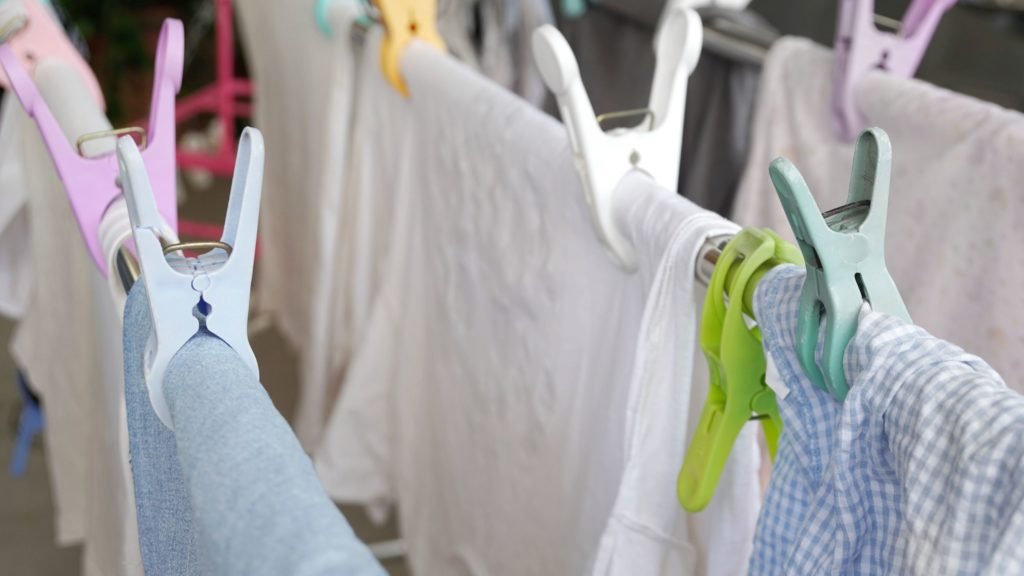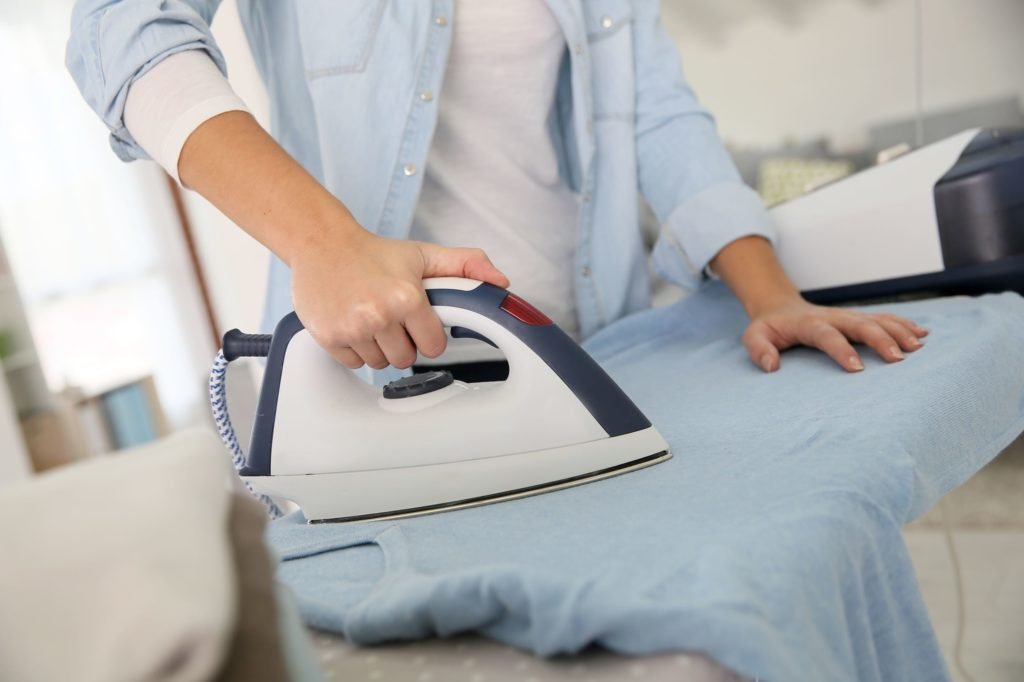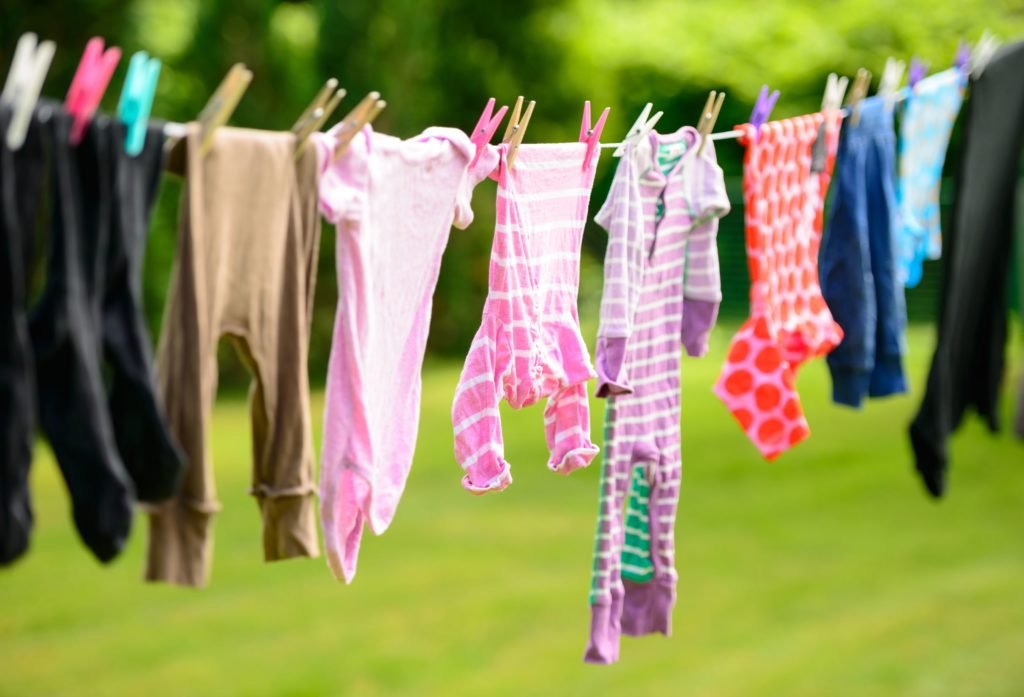No matter how organised you are, at some point, you’re bound to find yourself wishing that your clothes could dry a little quicker. If you’re in a rush, try one of these three methods:
- To dry clothes quickly, start by setting your washing machine to complete an extra spin cycle to get rid of excess moisture.
- If you have a tumble dryer put a few wet clothes in with some large dry towels. Without a dryer, it’s best to spread each item out on a rack or radiator. Placing them outside, in a doorway or next to a fan or heater will speed the process further.
- To dry a single garment, roll it up in a dry towel, squeeze it firmly, then unwrap and finish it off with a hairdryer or iron.
What can you do if you discover that the clothes you need are still wet? Drying clothes quickly depends on several factors which you can easily speed up with a few household items and simple tricks.
Preparing clothes to dry faster
If you properly prepare your clothes for drying it will happen much quicker. Items that are still dripping with water will take days to dry, whatever methods you use.
Start by getting as much water out of them as possible. If you’ve just washed them in a washing machine, use the spin cycle as many times as necessary to stop them from dripping. If you don’t have a washing machine with a spin cycle, try wringing out non-delicate items, outside or over a bath.
Extra-fast tip- Dry your clothes in a towel
If your clothes are still wet after spinning or wringing them, try wrapping them in a towel:
- Lay out a large dry towel.
- Place your wet garment on top of the towel and smooth it flat.
- Firmly roll them up together, gently squeezing them as you go.
- Either twist the bundle tightly together or put it on the floor and use your body weight to press the roll together.
- Unwrap the towel and remove the item of clothing. It should now be free of most moisture and ready for the drying stage.
Dry clothes quickly using a tumble dryer
Now that you’ve removed most of the large droplets of water you will have already reduced the time your clothes will need in the tumble dryer. For best results, put one or two items in at a time. This isn’t very energy efficient, but if you keep a close eye on them, you can prevent wasting more energy by removing them as soon as they are dry.
Extra-fast tips:
- Clean out the dryer filter. This will make sure that airflow is at its maximum and improve the drying speed.
- Add some large dry towels to the drum along with your damp items. This works best with more towels and fewer pieces of clothing.
How to dry clothes quickly without a tumble dryer

The more air you can get to your clothes, the faster they will dry. This means spreading them out so that air get all around them. If you have a rack, rotary dryer or radiator, arrange each garment, so it is as far away from other clothing as possible.
Increasing the temperature or airflow will also speed up the process. If you can hang your washing up outside, look for areas of direct sunlight or where the wind is blowing strongest. The strongest drafts can often be found around the sides of houses, near doorways, or through alleys or gateways.
If a lack of outdoor space prevents you from drying your clothes outside, try placing them near radiators or open windows. This will keep the air moving around them and speed up the process.
Safety tips:
- When drying clothes indoors, it is essential to take steps to make sure your drying area is properly ventilated. A study by Glasgow’s Mackintosh School of Architecture found that drying wet things indoors without adequate ventilation posed a health risk to those with asthma or allergies.
- Don’t place any clothing close to or on a portable electric heater. They get very hot quickly and if fabric is left too close, it can be a serious fire hazard.
Where possible, only dry clothes in areas with independent heat and ventilation. Bathrooms and utility rooms often have extra ventilation making them ideal for drying.
Can you dry clothes in the microwave?
Your microwave may seem like the ideal solution when you need dry clothes quickly, but it is not recommended. Microwaves have very little ventilation, so heating wet garments will result in steam quickly filling them up. Instead of being dry, your clothes will end up being very hot and damp.
Also, microwaves are notorious for distributing heat unevenly. One area may get baking hot quickly while others stay cold. As a result, placing clothing in the microwave poses a significant risk of fire.
Instead of using a microwave, if you need to dry one or two items in a hurry, why not try one of these extra-fast drying tips:
Using an iron

If you have got as much moisture as you can from your clothes by wrapping it in a towel or spinning it in your washing machine, you can finish the drying process with a hot iron.
- Place one item of clothing on your ironing board.
- If the garment is only slightly damp, iron it directly to remove the remaining moisture.
- If your item of clothing is still very damp, cover it with a thin towel and iron through the towel. This will prevent too much steam being produced and misshaping or damaging your clothes.
Using a hairdryer
You can use a hairdryer to dry an item of clothing at any point, but if you can use other methods to get as much moisture out first, it will be more effective.
- Lay the garment out flat on an ironing board.
- Turn your hairdryer to its maximum and slowly move the warm air over the item.
- Concentrate on one small area at a time, slowly moving around until it is nearly dry. Then move onto a new area.
- When all parts are nearly dry, turn it over and repeat.
- Keep repeating steps 2 to 4 until most areas are completely dry.
- Finally, concentrate the air stream on the tricky areas like seams and collars.
Conclusion
With a few handy pieces of equipment and a lot of towels, it is possible to dry clothes in just a few minutes. The more things you need to dry quickly, the longer it will take, so it is best to split them into small batches.
Whether you choose to use a tumble dryer, a hot iron or a hairdryer, remember to try and remove as much of the water as you can first. Whatever methods work for you, the more you practice, the more efficient you will be.

Wow! Some great tips!